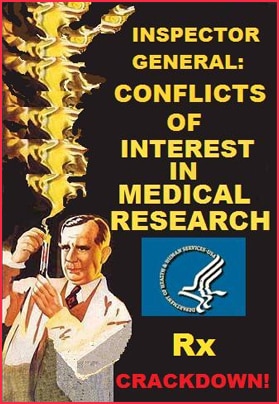
In the realm of discourse about childhood obesity, people who think about it at all tend to think about it a lot. People who have opinions about it often have very strong opinions. A whole area of dialogue stems from neither thought nor opinion, but from what is in a person’s stock portfolio or who signs the paychecks. Once in a while, an individual story floats to the top that illustrates what can happen when someone is maybe not careful enough about mixing professional obligations.
Back in 2008, anti-obesity activists in New York City were trying to get a law passed to make calorie information more readily apparent on fast-food packaging. Dr. David Allison submitted an affidavit to the U.S. District Court. His expert opinion was paid for by the New York State Restaurant Association, as described by Stephanie Saul in The New York Times:
In the filing, Dr. Allison argues that the new rules could backfire — whether by adding to the forbidden-fruit allure of high-calorie foods or by sending patrons away hungry enough that they will later gorge themselves even more… ‘What harms (if any) might result’ from the new rules? Dr. Allison wrote in the court filing. ‘That is difficult to predict.’
So, as a paid consultant, Dr. Allison basically answered the question: maybe, maybe not. Which doesn’t seem too heinous. And if he had not been president-elect of The Obesity Society, it would have been a totally unremarkable occurrence, just business as usual. But the public knowledge of this transaction caused plenty of friction, and Dr. Allison withdrew from the presidency.
In his letter of resignation, Dr. Allison apologized, but not for anything he said, or his right to say it, or to say it in any way he chose. He did realize it was a serious political error, and regretted that some might have misconstrued his opinion as being the consensus of The Obesity Society, which it totally was not.
He also went on to say,
I am trying to see this as a wonderful opportunity to model for my students how to admit mistakes, to not give up but rather ask colleagues for the opportunity to work to heal wounds, and finally to hold one’s head up and accept the consequences of one’s actions courageously. If ever there was a ‘teachable moment’ this is it.
And, of course, the letter was graciously acknowledged and the resignation was accepted by The Obesity Society. In the wake of this disturbance of the Society’s election process, Dr. Pretlow wrote to the president of the society and some other influential people. He suggested that it would be a good idea for any ties with the food industry to be made public by The Obesity Society’s officers, board members, council members, committee chair, and conference program chairs.
Strangely, nobody replied, and nothing was done. Dr. Pretlow was surprised to learn that, even when it was brought to their attention and pointed out, people didn’t quite understand the conflict of interest, as he found out when discussing the Times article and the resignation letter at a conference.
This was not Dr. Allison’s first brush with controversy. Back in 2005, people were upset over the report that obesity cuts down life expectancy by two to five years, a project that Dr. Allison has worked on along with S. Jay Olshansky. It turned out that there was no statistical evidence to demonstrate it. Dr. Allison was quoted as saying,
These are just back-of-the-envelope, plausible scenarios… We never meant for them to be portrayed as precise.
W. Wayt Gibbs wrote in Scientific American,
The life expectancy costs of obesity that Olshansky and his colleagues actually calculated were based on a handful of convenient, but false, presuppositions… To project death rates resulting from obesity, the study used risk data that are more than a decade old rather than the newer ratios … The authors further assumed not only that the old mortality risks have remained constant but also that future advances in medicine will have no effect whatsoever on the health risks of obesity.
To a naïve outsider, one thing about The Obesity Society presidential resignation mini-scandal is very mysterious. Surely this menu/calorie issue could not have been the first awareness that anyone possessed about Dr. Allison’s professional activities. This paragraph was published in March of 2005 by the Consumer Freedom website:
David Allison presents a number of troubling financial conflicts of interest — so many, in fact, that NEJM published a three page financial disclosure, listing more than 100 organizations (mostly weight-loss companies) from which he’s received money.
That is only a short excerpt, and whether anyone thinks these commercial transactions are okay or not, David Allison’s were definitely public knowledge. Why didn’t anyone from The Obesity Society perform some kind of due diligence, before he was even nominated? It would have spared everybody some pretty serious embarrassment.
Your responses and feedback are welcome!
Source: “Conflict on the Menu,” The New York Times, 02/16/08
Source: “David Allison resigns as president of The Obesity Society (NAASO),” Health, 02/29/08
Source: “Scientific American — Obesity: An Overblown Epidemic?,” Forum, 05/24/05
Source: “Life Expectancy: Another Obesity Myth Debunked,” ConsumerFreedom.com, 03/17/05
Image by Mike Licht, NotionsCapital.com, used under its Creative Commons license.

 FAQs and Media Requests:
FAQs and Media Requests: 











